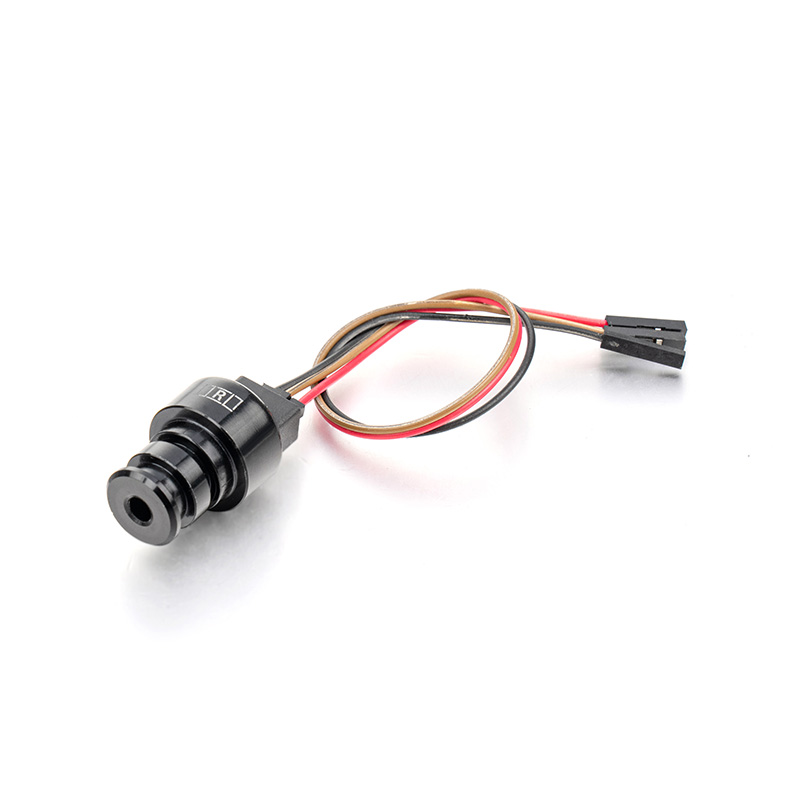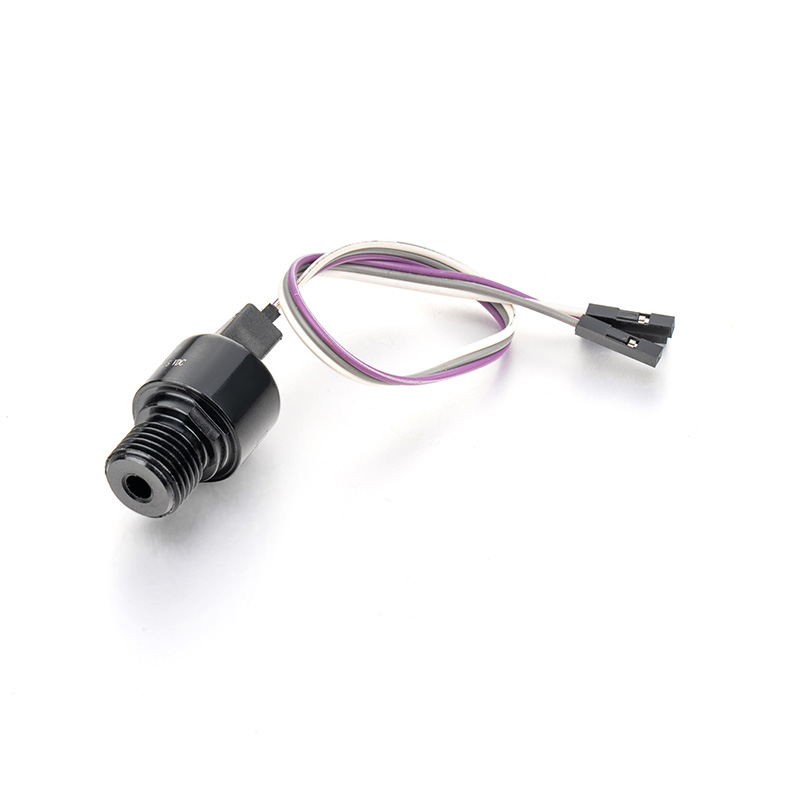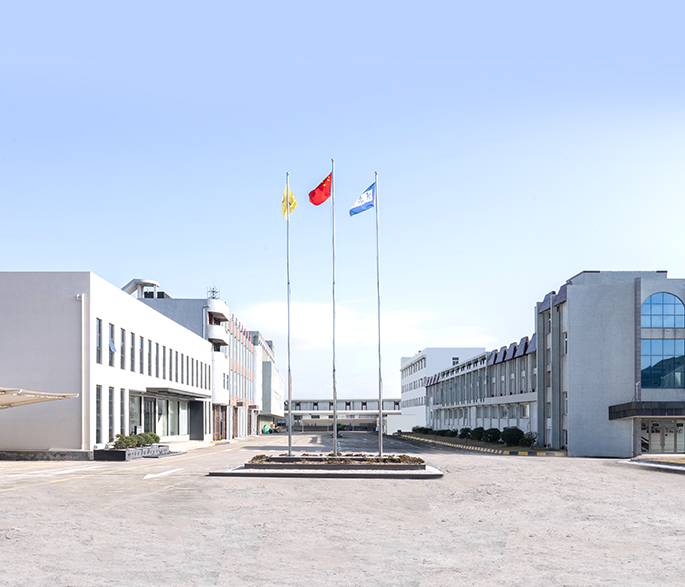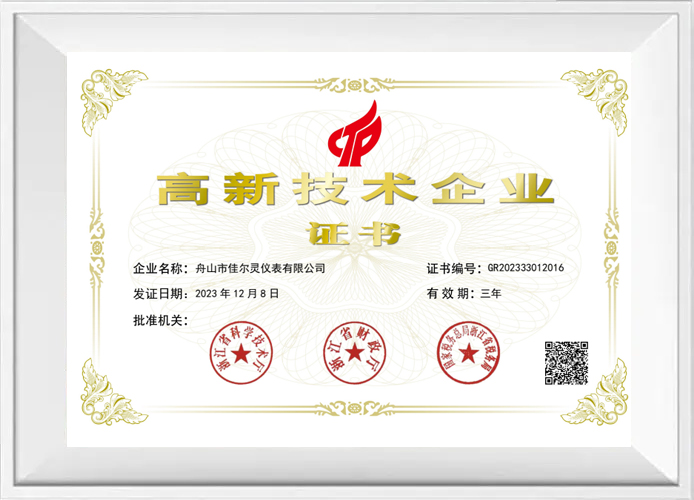Need help? Call us: +86-15105800333 / Whatsapp:+86-15105800333 / Email:[email protected]
- Home
- Product
- About
- Strength
- News
- Contact


The accuracy of pressure transducer sensors is critical to the HVAC industry, especially in situations where precise pressure control is required, such as refrigerant pressure control in refrigeration systems. High-precision pressure sensors can ensure that the system operates within the optimal pressure range to avoid excessively high or low pressures that lead to reduced system efficiency or equipment damage. In addition, the long-term stability and reliability of pressure sensors are also critical, especially in continuously operating HVAC systems, where sensors need to maintain consistent performance over a long period to reduce maintenance frequency.
HVAC systems usually operate in a variety of complex environments, and pressure sensors must have good environmental resistance. For example, in extreme temperatures, large humidity changes, or corrosive media, sensors must still be able to provide accurate measurements. This requires sensors to have high-temperature resistance, corrosion resistance, vibration resistance, and other characteristics to ensure their normal operation in harsh environments.
Pressure changes in HVAC systems can sometimes be very rapid, and sensors need to have fast response capabilities to adjust system parameters in a timely manner. Especially in applications such as refrigerant flow regulation and fan pressure control, the response speed of the sensor directly affects the dynamic performance and energy efficiency of the system.
| Rated load | 0-4bar、6bar、8bar、10bar、16bar |
| Scale range | 0-0.4~1.6Mpa |
| Accuracy class | ±1.0%FS |
| Connection | G1/4、Plug-in、Customizable |
| Operating Voltage | 5.0±0.5VDC |
| Protection class | IP65 |

| Rated load | 0-4bar、6bar、8bar、10bar、16bar |
| Scale range | 0-0.4~1.6Mpa |
| Accuracy class | ±1.0%FS |
| Connection | G1/4、Plug-in、Customizable |
| Operating Voltage | 5.0±0.5VDC |
| Protection class | IP65 |


| Rated load | 0-4bar、6bar、8bar、10bar、16bar |
| Scale range | 0-0.4~1.6Mpa |
| Accuracy class | ±1.0%FS |
| Connection | G1/4、Plug-in、Customizable |
| Operating Voltage | 5.0±0.5VDC |
| Protection class | IP65 |


Zhoushan Jiaerling Meter Co., Ltd. is China HVAC Pressure Transducer Sensor Manufacturers and Wholesale HVAC Pressure Transducer Sensor Factory. The company was established in 2004. It is a high-tech enterprise integrating design, research and development, manufacturing, import and export trade.
The company is located in Zhoushan City, Zhejiang Province, covering an area of 15,000 square meters, equipped with a 100,000-level clean workshop, conventional production and assembly workshop, automated production workshop, new laboratory and comprehensive office building.
After more than 20 years of hard work and development, the company has a stable design and development, production team, and advanced production and testing equipment. The company specializes in the production of various types of pressure gauges with complete specifications, and the annual output of pressure gauges reaches 6 million. In order to further develop, the company not only seeks improvement in technology, but also pays more attention to product quality and after-sales service. The company's purpose is to "regard quality as life, survive by reputation, promote development by technology, and serve customers with high-quality brands". The products are sold all over the world and are well received by domestic and foreign customers.
In 2019, the company participated in the compilation of the standard T/CECS10012-2019 "Gas Heating Hot Water Boiler and Water Heater Water Circuit Components" of the China Engineering Construction Standardization Association.
Under the implementation of modern and digital enterprise management, the company has successfully introduced the advanced MES system in 2023, and the order process is fully visualized to track data, ensuring the continuity of production and improving production efficiency.
The company will continue to adhere to the principles of excellence, accuracy, reliability, continuous improvement, and meeting customer needs, hoping to share harmony and prosperity with friends across the country.








In the complex fluid measurements of the petroleum and chemical industries, the accuracy and stability of pressure instrumentation are crucial. Polypropylene (P...
View MoreIn the rigorous environment of the petrochemical industry, the reliability of pressure measuring instruments is paramount for safeguarding production and contro...
View MorePP diaphragm pressure gauges, with their polypropylene (PP) body and corrosion-resistant diaphragm materials (such as PTFE and Viton), occupy a unique position ...
View MoreThe core function of a PP diaphragm pressure gauge, particularly one used in corrosive environments such as the petrochemical and chemical industries, is to iso...
View MoreThe HVAC pressure transducer sensor is responsible for real-time monitoring and control of pressure changes in the heating, ventilation and air conditioning (HVAC) system. Zhoushan Jiaerling Meter Co., Ltd.'s HVAC pressure transducer sensor uses cutting-edge sensing technology and precision manufacturing processes to efficiently and accurately measure the pressure of gas or liquid, and convert these pressure signals into electrical signal outputs, providing reliable data support for the stable operation of the system.
Working principle analysis
Jiaerling's HVAC pressure transducer sensor is mainly based on strain resistance and capacitive sensing technologies. The following is an in-depth analysis of the working principles of these two technologies:
Strain resistance working principle
The strain resistance pressure sensor is equipped with an elastic sensitive element, such as a metal diaphragm or a strain gauge. When the pressure of the measured medium (gas or liquid) acts on the sensitive element, the sensitive element will undergo a slight deformation. This deformation causes a change in the resistance value of the strain gauge, and the change in resistance value is proportional to the applied pressure. The greater the pressure, the more significant the change in resistance value. Through the measurement circuit, this change in resistance value can be converted into an electrical signal to achieve accurate pressure measurement. JRL's strain gauge resistance pressure sensor uses high-precision strain gauges and advanced signal processing circuits to ensure high accuracy and stability of the measurement results.
Capacitive working principle
The capacitive pressure sensor measures pressure based on the principle of capacitors. The sensor contains two electrode plates, one of which is fixed and the other is connected to the elastic sensitive element. When the pressure of the measured medium acts on the sensitive element, the deformation of the sensitive element causes the distance between the two electrode plates to change. The change in capacitance value is proportional to the applied pressure. The greater the pressure, the more significant the change in capacitance value. Through the measurement circuit, the change in capacitance value can also be converted into an electrical signal, thereby achieving high-precision measurement of pressure. Zhoushan Jiaerling Meter Co., Ltd.'s capacitive pressure sensor uses high-precision electrode plates and advanced capacitance measurement circuits to ensure the reliability and accuracy of the measurement.
Technical features and advantages
Zhoushan Jiaerling Meter Co., Ltd.'s HVAC pressure transducer sensor has many significant technical features and advantages. First, the sensor uses high-precision sensing elements and advanced signal processing technology to ensure the accuracy and stability of the measurement. Secondly, its wide measurement range and fast response speed enable the sensor to adapt to various HVAC systems with different pressure levels. In addition, the sensor also has self-calibration and self-diagnosis functions, which can automatically adjust the measurement error and detect fault conditions, thereby reducing maintenance costs and simplifying the use process.
Installation principles of pressure sensor
Easy maintenance and operation
The installation location of the pressure sensor should be selected in an easily accessible area for daily maintenance, inspection and troubleshooting. Reasonable layout can improve work efficiency, reduce maintenance costs and ensure reliable operation of the system.
Stay away from interference sources
When selecting the installation location, environmental factors such as high temperature, high humidity, high vibration and strong electromagnetic interference should be avoided. These factors may have an adverse effect on the measurement results of the sensor, resulting in inaccurate data and unstable system. Therefore, it is crucial to choose a relatively stable environment.
Fluid stable area
In the process pipeline, the pressure sensor should be installed in an area where the fluid flow is relatively stable. Impurities and turbulence in the fluid will interfere with the sensor and affect the accuracy of the measurement. By choosing a suitable installation location, these interferences can be minimized.
For different types of HVAC systems, the specific installation location of the pressure sensor will be different. For example, in condensing gas pressure measurement, the sensor should be located at the top of the pipe to prevent condensation from affecting the sensor; while in liquid pressure measurement, the sensor should be installed on the side of the pipe, close to the bottom, to ensure the accuracy of the measurement.
HVAC pressure transducer sensor installation precautions
When installing HVAC pressure transducer sensors, customers need to pay special attention to the following points to ensure the performance and service life of the sensor:
Check the mounting hole size
Make sure that the size of the mounting hole matches the thread specification of the sensor to avoid damage to the sensor during installation. If the mounting hole size is found to be inappropriate, it should be adjusted with appropriate tools to ensure smooth installation.
Clean the mounting surface
Before installation, be sure to clean the mounting surface and the threads of the sensor with a clean cloth or cotton swab to ensure that there are no impurities and oil stains. Good cleaning helps to form an effective seal and prevent leakage during operation.
Install the sealing gasket
During the installation process, be sure to use a suitable sealing gasket and ensure that the gasket fits tightly with the interface. This measure can effectively prevent the leakage of liquid or gas and ensure the accuracy of the measurement data.
Avoid over-tightening
When rotating the sensor to the tightening position, be careful not to over-tighten to avoid damaging the threads or gaskets. Generally, using the appropriate installation torque can ensure that the sensor is firmly installed and ensures its normal operation.
Connecting cables
When making cable connections, ensure that the connection is firm and reliable. It is recommended to use shielded cables to reduce the risk of electromagnetic interference. At the same time, the cable should be kept away from strong power lines or places with pulse waves as much as possible to avoid signal interference and ensure the stability of the system.
Testing and calibration
After installation, the sensor must be fully tested and calibrated to ensure that its measurement accuracy meets the predetermined requirements. JRL provides professional testing and calibration services to meet the high standards of customers and ensure the efficient operation of the system.